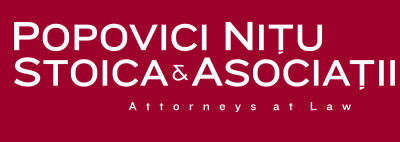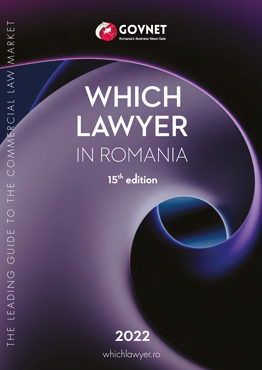- About Us
-
Expertise
- Banking & Finance
- Capital Markets
- Competition & Antitrust
- Corporate & Commercial
- Data Privacy
- Employment & Pensions
- Energy & Natural Resources
- Gambling & Betting
- Healthcare & Pharmaceuticals
- Insurance
- Intellectual Property
- International Arbitration
- Litigation
- Mergers & Acquisitions
- Project Finance/PPP, Concessions & Infrastructure
- Public Procurement
- Real Estate
- Restructuring & Insolvency
- Sports Law
- Tax
- Telecommunications, Media & Technology
- Transports & Logistics
- White Collar Compliance & Defense
- Our team
- Careers
- Publications
- News and Press
- Contact
Articles
Which Lawyer in Romania 15th edition
CORPORATE M&A
Romanian Transactional Work
Trends and Tips for 2023

Florian Nițu, Managing Partner
Recent years have largely confirmed the market expectations for the transactional legal work to get lighter, faster and of course better in order to keep up with the economic structural transformations.
In terms of legal counsel work, the "lighter- faster-better" paradigm brought in massive changes in relation to the transactional due diligence scope and standard of review, project structuring, transaction documenting, and it has hallowed the legal risk hedging. I discuss below these trends and share certain tips.
Due Diligence Scope and Standard of Review
The usual suspects around critical impact clearances have traditionally been assessing and handling the relation with the relevant regulators or control authorities, or more recently and acutely the Sanctions impact. Beyond them, checking the mechanism for analysing and authorising foreign investments from outside of the EU space has become of ever-increasing importance. Together therewith, and of course related thereto, the assessment of conducting business bans and restrictions, as for example limitations of rights to partner or bid, limitations of capital expenditures or investment, including profit repatriations, are getting a central role in the diligence review. The same is applicable in case of the risk of state intervention by means of regulation or administrative actions, or by indirect competition more generally.
Careful review of change of control provisions of all nature, scale and effect, and at all levels, remains a key concern, including with respect to the risk to trigger a hostile action or a take-over or a mandatory procedure of any kind as a result of the prospected transaction. Nonetheless, at the same time the compliance package – "The ABC Review" – and the reputational assessment, including issues in the public-private relation, got equally important. Same goes with what I refer to as "The Triple K Analysis" or the KYP – KYS – KYC Assessment [know your partner, your supplier and your customer]. All these require an even more pervasive investigation when it comes to publicly funded contracts, joint venture agreements and consortia or contractor or sub-contractor agreements in relation to public to private contracts, which will add a layer of complexity where there is 'PEP involvement'. Scrutiny of contractual arrangements where politically exposed persons are involved has always been a hot point in the DD, but the standard of review got elevated notably. As it is the case with the assessment of conflicts of interest.
I would add here three other major trends. One refers to rating the stability of the target core business from a legal standpoint, which entails the legal review of matters relevant for the target's supply chain security, but also for key customer retention or the labour and expert capital stability. With it, the retention rate and review of relations in view of contracting or restating contracts with senior management is also a must.
Continue reading
PPP
Public Procurement in 2022
Thoughts on an early retrospective

Ramona Pentilescu, Managing Associate
In a nutshell, in the public procurement sector, 2022 has been the year with the highest number of amendments brought on to the legislative framework since the adoption, in 2016, of the package transposing the new 2014 EU Public Procurement Directives. It is also a record compared to the former legislative background, applicable between 2006 - 2016. We have witnessed no less than 6 major amendments to the primary legislation on public procurement - rolling out since March 2022 to October 2022, almost once per month, and two major amendments to the remedies legislation, therein not including additional secondary legislation and special rules adopted in respect to certain types of contracts (for example on price adjustment). All in all, 2022 may have been the most active legislative year in the public procurement sector since such a sector has been regulated in Romania under EU law. And it is not yet over.
The main reason stated for such amendments: the need to create a more flexible and efficient legal background to ensure the award and implementation of projects under the National Resilience and Recovery Plan.
Whether such an intense legislative activity in this sector is beneficial to the sector or not is still to be determined based on the centralised data for the year 2022 and the next years to come. Nevertheless, the immediate effect on the sector is already visible: both private sector and public sector and, moreover, courts of law signal contradictions within the legal texts, divergent practice and the need for further clarification.
Will such a stress on the system achieve the envisaged goal? Does it really address the problems within the system and ensure a smoother implementation of investments projects? Let's have a look on the main stages of the public procurement process and trends that are forming within.
Continue reading
Download Article











